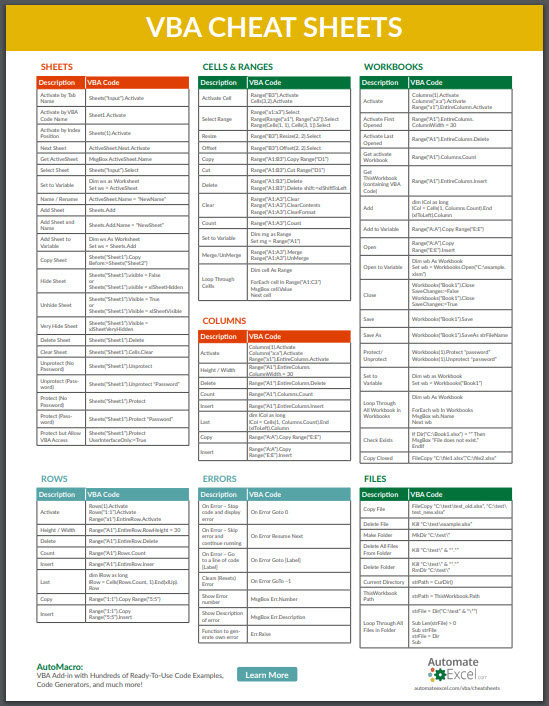5 Ways to Find Excel Duplicates in Separate Sheets

When working with extensive datasets in Microsoft Excel, you might often find yourself needing to compare values across different sheets to identify duplicates. Whether you're managing financial records, customer data, or inventory lists, finding duplicate entries efficiently can streamline your work, enhance data accuracy, and save you significant time. Here are five effective methods to locate and manage duplicates in separate Excel sheets:
1. Use the VLOOKUP Function

The VLOOKUP function is a staple for many Excel users, known for its ability to look up and retrieve data from a table or range. Here’s how you can use it to find duplicates:
- Open the Excel workbook containing your sheets.
- Select a cell in the sheet where you want the results to appear.
- Enter the following formula, adjusting ranges for your specific sheets:
=IF(ISERROR(VLOOKUP(A2,Sheet2!A:A,1,FALSE)), “No Duplicate”, “Duplicate”)This formula will check if the value in cell A2 from your current sheet exists in column A of Sheet2. If it finds a match, it returns “Duplicate,” otherwise “No Duplicate.”
⚠️ Note: Ensure the columns you are comparing are in the same format to avoid mismatches due to text/number formatting.
2. Conditional Formatting Across Sheets

Conditional formatting can visually highlight duplicates across different sheets:
- Select the range or column where you want to highlight duplicates.
- Go to Home > Conditional Formatting > New Rule.
- Choose “Use a formula to determine which cells to format.”
- Enter a formula like this:
=COUNTIF(Sheet2!A:A,A1)>0- Set the format you desire for highlighting and click OK.
🔍 Note: If your sheets are large, this method might be computationally intensive. Performance can be slow for very large datasets.
3. Power Query for Advanced Duplicate Detection

Power Query, available in recent versions of Excel, provides robust tools for data manipulation:
- Go to Data > Get Data > From Other Sources > Blank Query.
- In the Power Query Editor, select Advanced Editor and input this query to combine data from two sheets:
let
Source1 = Excel.CurrentWorkbook(){[Name=“Sheet1”]}[Content],
Source2 = Excel.CurrentWorkbook(){[Name=“Sheet2”]}[Content],
Merged = Table.NestedJoin(Source1, {“ColumnA”}, Source2, {“ColumnA”}, “Matched”, JoinKind.FullOuter),
DuplicateRows = Table.SelectRows(Merged, each [Matched] <> null)
in
DuplicateRows- Click Close & Load to create a new sheet with the results.
4. The MATCH and INDEX Combination

By combining MATCH and INDEX, you can find duplicates without merging sheets:
- Use this formula in a cell in Sheet1:
=IF(ISNA(MATCH(A2,Sheet2!A:A,0)),“No Match”,INDEX(Sheet2!B:B,MATCH(A2,Sheet2!A:A,0)))- This formula checks for duplicates by looking for a match in Sheet2 and returns either “No Match” or the corresponding value from Sheet2’s column B.
💡 Note: The MATCH function can be slower on large datasets. Consider limiting the lookup range if performance issues arise.
5. Using Excel Macros for Automation

If you often need to find duplicates across sheets, automating the process with VBA can be beneficial:
- Press Alt + F11 to open the VBA editor.
- Insert a new module and enter the following macro:
Sub FindDuplicates() Dim ws1 As Worksheet, ws2 As Worksheet Dim rng1 As Range, rng2 As Range Dim cell1 As Range, cell2 As RangeSet ws1 = Sheets("Sheet1") Set ws2 = Sheets("Sheet2") Set rng1 = ws1.Range("A2:A" & ws1.Cells(ws1.Rows.Count, "A").End(xlUp).Row) Set rng2 = ws2.Range("A2:A" & ws2.Cells(ws2.Rows.Count, "A").End(xlUp).Row) For Each cell1 In rng1 For Each cell2 In rng2 If cell1.Value = cell2.Value Then cell1.Interior.Color = RGB(255, 0, 0) End If Next cell2 Next cell1
End Sub
- Run the macro to highlight all duplicates in Sheet1.
📌 Note: Macros can enhance productivity but can also be a security risk if shared. Ensure you only use macros from trusted sources.
In conclusion, identifying duplicates across separate sheets in Excel can be approached in numerous ways, each with its advantages. Whether you prefer formula-based solutions like VLOOKUP or MATCH, visual aids like conditional formatting, or the power of Power Query and macros, Excel offers the tools to fit your workflow. Understanding which method suits your specific needs can significantly improve your efficiency in data management.
What is the quickest way to find duplicates in Excel?

+
For simple datasets, the VLOOKUP function might be the quickest. However, for complex datasets or large files, Power Query or macros could be more efficient.
Can I use these methods to find duplicates across multiple workbooks?

+
Yes, you can. Most methods mentioned can be adapted to work across different workbooks by adjusting the references or using VBA to navigate through files.
How can I manage duplicates once found?

+
Once duplicates are identified, you can remove them, highlight them for review, or consolidate data into a summary table.
Are there any limitations to using Excel functions for duplicate detection?

+
Yes, Excel functions might become slow on very large datasets. Additionally, formatting issues or type mismatches can lead to errors in detection.
Is learning VBA necessary for managing Excel data?

+
While not necessary, VBA can significantly enhance your capability to automate repetitive tasks and manage complex operations in Excel.



